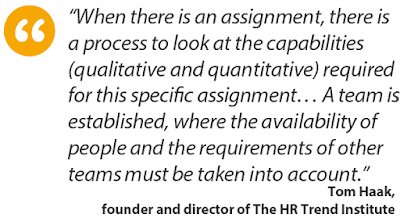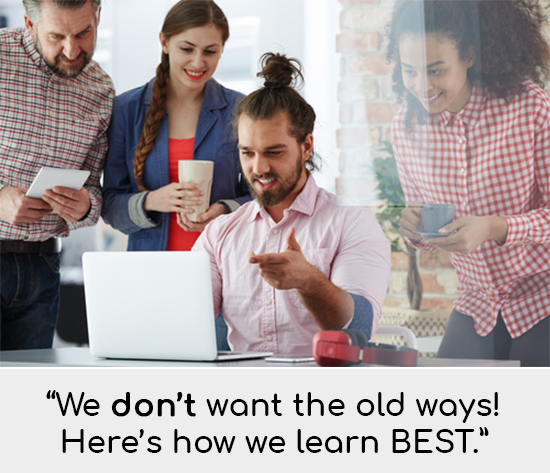There’s an interesting book that talks about the future of work by Jacob Morgan titled The Future of Work: Attract New Talent, Build Better Leaders, and Create a Competitive Organization. In his book, he urges organizations to “rethink and challenge everything they know about work.”
Why is this so? Morgan mentions that the demographics of employees are changing and so, too, are their work styles, beliefs, and attitudes.
5 Generations of Learners
Organizations today are seeing five generations working side by side: the silent generation (2%), the baby boomers (25%), Gen Xers (33%), millennials (35%), and post-millennial generation (5%), according to the Pew Research Center. In the coming years, the number of older generation workers will continue to decrease, and the two youngest generations will comprise the majority of employees in organizations.
What does this all mean?
L&D That Matches the Evolution of Employees
Because millennials make up the majority of workers now and in the coming years, it’s important to account for their learning preferences in our L&D programs. Not only will this encourage them to stay, it will also entice them to join your organization. According to Gallup, millennials view professional development and career growth opportunities as the most important factor in a job.
Here are 5 ways to match the learning needs of new learners:
| 1 | On-demand, microlearning and story-based learning As new learners are accustomed to getting the information they want when they want it, on-demand and microlearning are unexpendable. In addition, it puts learners in control of their development, making learning more engaging and continuous. Similarly, story-based learning also works well, given their social media habits. |
|||
| 2 | Sharing of insights and learning New learners pine for a social aspect to their training and learning, as they’re used to in social networking sites. Use collaboration platforms, such as Slack, which allow for real-time and immediate sharing of insights and ideas. |
|||
| 3 | Learning agility In a world that’s volatile, uncertain, complex and ambiguous (VUCA), organizations and employees need to be learning agile. That is, they need to learn how to learn, and apply their learnings and adapt quickly to new scenarios that come up. |
|||
| 4 | Roles that take advantage of their strengths and interests The concept of “job crafting” means allowing employees to do their best by providing job roles that play to their strengths and interests so they can be more innovative and productive. Here’s how it works: |

| 5 | Customized career paths Learners want to be prepared for their next tasks, goals, and personal goals in life. For L&D, this means asking the question of how we can help them prepare for the next phase of their career or achieve personal goals, such as learning something that valuable to them. Read this blog post to learn 3 ways to create career development activities that work for new learners. |
Are You Prepared to Meet the Needs of New Learners?
Share with me what your organization is doing to address your employees’ training and learning needs in the comments below.
Jacob Morgan. The Future of Work: Attract New Talent, Build Better Leaders, and Create a Competitive Organization. Wiley; 1 edition (August 25, 2014)
Richard Fry. Millennials are the largest generation in the U.S. labor force. Pew Research Center, April 11, 2018
Richard Fry. Millennials projected to overtake Baby Boomers as America’s largest generation. Pew Research Center, March 1, 2018
Amy Adkins and Brandon Rigoni. Millennials Want Jobs to Be Development Opportunities. Gallup, June 30, 2016
Annamarie Mann and Amy Adkins. The Dream Job. Gallup, March 1, 2017
Tom Haak. The End of Static Jobs (HR Trends 2017, 18). HR Trend Institute, September 11, 2017
Tip #75 – Insight Sharing – How They “Meet and Mate”
Tip #174 – Why Story Lessons Are the Most Engaging Learning for Millennials
Tip #175 – 3 Ways to Learn Better in the Modern Era
Tip #187 – How VUCA Expands Learning Horizons
Tip #188 – 4 Ways to Develop Learning Agility
Tip #189 – Adopt Independent Lifelong Learning to Meet Workplace Challenges
Tip #194 – It’s Personal: Creating Career Development Activities That Work
Ray Jimenez, PhD
Vignettes Learning
“Helping Learners Learn Their Way”

